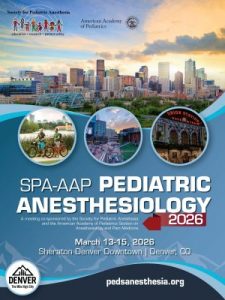{“questions”:{“clham”:{“id”:”clham”,”mediaType”:”image”,”answerType”:”text”,”imageCredit”:””,”image”:””,”imageId”:””,”video”:””,”imagePlaceholder”:””,”imagePlaceholderId”:””,”title”:”A 13-year-old male with a history of Duchenne Muscular Dystrophy presents for preoperative evaluation. Which of the following abnormalities is MOST likely to be present? “,”desc”:””,”hint”:””,”answers”:{“n655i”:{“id”:”n655i”,”image”:””,”imageId”:””,”title”:”A.\tHyperkalemia”},”mkx4w”:{“id”:”mkx4w”,”image”:””,”imageId”:””,”title”:”B.\tDecreased FEV1\/FVC ratio”},”ra7si”:{“id”:”ra7si”,”image”:””,”imageId”:””,”title”:”C.\tLeft ventricular dilation”,”isCorrect”:”1″},”q3s2z”:{“id”:”q3s2z”,”image”:””,”imageId”:””,”title”:”D.\tElevated serum lactate levels”}}}},”results”:{“wo2ha”:{“id”:”wo2ha”,”title”:””,”image”:””,”imageId”:””,”min”:”0″,”max”:”1″,”desc”:””,”redirect_url”:”https:\/\/pedsanesthesia.org\/wp-content\/uploads\/2022\/12\/Week-121-Duchenne-Muscular-Dystrophy.pdf”}}}
Question of the Week #120
{“questions”:{“q8xji”:{“id”:”q8xji”,”mediaType”:”image”,”answerType”:”text”,”imageCredit”:””,”image”:””,”imageId”:””,”video”:””,”imagePlaceholder”:””,”imagePlaceholderId”:””,”title”:”Which of the following is MOST LIKELY to occur as a long-term sequela of painful procedures in the neonate?”,”desc”:””,”hint”:””,”answers”:{“fxnpy”:{“id”:”fxnpy”,”image”:””,”imageId”:””,”title”:”A.\tDecreased biological response to subsequent painful procedures. “},”ig2t8”:{“id”:”ig2t8″,”image”:””,”imageId”:””,”title”:”B.\tLower stimulated cortisol response levels initially, followed by a reset of the endocrine stress response with higher cortisol levels later in life.”,”isCorrect”:”1″},”sx15f”:{“id”:”sx15f”,”image”:””,”imageId”:””,”title”:”C.\tEqual cognitive, motor skills and growth scores compared to controlled counterparts not exposed to repeated painful procedures. “},”55g74”:{“id”:”55g74″,”image”:””,”imageId”:””,”title”:”D.\tDecreased risk of secondary hyperalgesia.”}}}},”results”:{“baz9p”:{“id”:”baz9p”,”title”:””,”image”:””,”imageId”:””,”min”:”0″,”max”:”1″,”desc”:””,”redirect_url”:”https:\/\/pedsanesthesia.org\/wp-content\/uploads\/2022\/11\/Week-120-Nociception-in-Neonates.pdf”}}}
Question of the Week #119
{“questions”:{“roh0v”:{“id”:”roh0v”,”mediaType”:”image”,”answerType”:”text”,”imageCredit”:””,”image”:””,”imageId”:””,”video”:””,”imagePlaceholder”:””,”imagePlaceholderId”:””,”title”:”An infant delivered via cesarean section at 28 weeks gestational age is unable to maintain her oxygen saturation above 90% despite being on an FiO2 of 0.6. The infant is intubated and started on surfactant replacement therapy. Which of the following MOST accurately describes the mechanism of action of surfactant?”,”desc”:””,”hint”:””,”answers”:{“y0ef6”:{“id”:”y0ef6″,”image”:””,”imageId”:””,”title”:”A.\tDecreases lung compliance”},”4nocd”:{“id”:”4nocd”,”image”:””,”imageId”:””,”title”:”B.\tDecreases alveolar surface tension”,”isCorrect”:”1″},”nfj0f”:{“id”:”nfj0f”,”image”:””,”imageId”:””,”title”:”C.\tIncreases alveolar diffusion”},”856bo”:{“id”:”856bo”,”image”:””,”imageId”:””,”title”:”D.\tDecreases transpulmonary pressure”}}}},”results”:{“hf98r”:{“id”:”hf98r”,”title”:””,”image”:””,”imageId”:””,”min”:”0″,”max”:”1″,”desc”:””,”redirect_url”:”https:\/\/pedsanesthesia.org\/wp-content\/uploads\/2022\/11\/Week-119-Surfactant.pdf”}}}
Question of the Week #118
{“questions”:{“1ua5z”:{“id”:”1ua5z”,”mediaType”:”image”,”answerType”:”text”,”imageCredit”:””,”image”:””,”imageId”:””,”video”:””,”imagePlaceholder”:””,”imagePlaceholderId”:””,”title”:”An 18-year-old female taking amitriptyline and citalopram undergoes an uneventful general anesthetic with a single-shot peripheral nerve block. Four hours after taking Tramadol, the patient develops hyperthermia, confusion, blurry vision, and rhythmic muscle jerks. Which of the following is the MOST likely diagnosis?”,”desc”:””,”hint”:””,”answers”:{“al49y”:{“id”:”al49y”,”image”:””,”imageId”:””,”title”:”A.\tMalignant hyperthermia “},”p8tvs”:{“id”:”p8tvs”,”image”:””,”imageId”:””,”title”:”B.\tLocal anesthetic systemic toxicity”},”jigwq”:{“id”:”jigwq”,”image”:””,”imageId”:””,”title”:”C.\tSerotonin syndrome”,”isCorrect”:”1″},”d9fzd”:{“id”:”d9fzd”,”image”:””,”imageId”:””,”title”:”D.\tNeuroleptic malignant syndrome”}}}},”results”:{“dpvg1”:{“id”:”dpvg1″,”title”:””,”image”:””,”imageId”:””,”min”:”0″,”max”:”1″,”desc”:””,”redirect_url”:”https:\/\/pedsanesthesia.org\/wp-content\/uploads\/2022\/11\/SPA-QOW-118-Posted-11-18-2022.pdf”}}}
Question of the Week #117
{“questions”:{“7yupc”:{“id”:”7yupc”,”mediaType”:”image”,”answerType”:”text”,”imageCredit”:””,”image”:””,”imageId”:””,”video”:””,”imagePlaceholder”:””,”imagePlaceholderId”:””,”title”:”A 14-year-old male with well-controlled type 1 diabetes and idiopathic scoliosis presents for posterior spine fusion. The surgery is expected to take four hours with an anticipated blood loss of 600mL. He uses an insulin pump for insulin administration. The insulin pump insertion site is located on the patient\u2019s lateral abdomen and will not interfere with the operative field or prone positioning. Which intraoperative insulin management plan is MOST appropriate for this patient?”,”desc”:””,”hint”:””,”answers”:{“1db5r”:{“id”:”1db5r”,”image”:””,”imageId”:””,”title”:”A.\tDiscontinue the insulin pump and start a continuous infusion of intravenous insulin.”,”isCorrect”:”1″},”4hhqm”:{“id”:”4hhqm”,”image”:””,”imageId”:””,”title”:”B.\tContinue the insulin pump infusion at its current rate.”},”evkac”:{“id”:”evkac”,”image”:””,”imageId”:””,”title”:”C.\tDiscontinue the insulin pump and administer a dose of long-acting subcutaneous insulin.”},”swk46″:{“id”:”swk46″,”image”:””,”imageId”:””,”title”:”D.\tContinue the insulin pump infusion and decrease the rate by half.”}}}},”results”:{“bggx7”:{“id”:”bggx7″,”title”:””,”image”:””,”imageId”:””,”min”:”0″,”max”:”1″,”desc”:””,”redirect_url”:”https:\/\/pedsanesthesia.org\/wp-content\/uploads\/2022\/11\/Week-117-Periop-Insulin-Administration-2.pdf”}}}
- « Previous Page
- 1
- …
- 30
- 31
- 32
- 33
- 34
- …
- 48
- Next Page »
